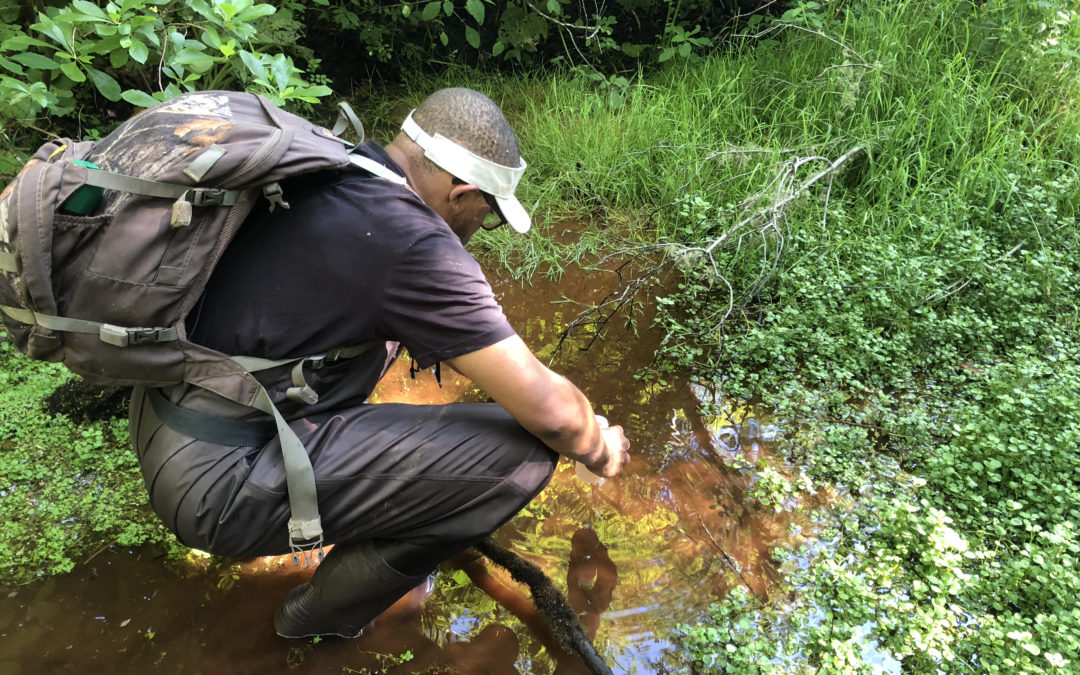Upstream/Downstream Initiative:
A major goal of the Cape Cod River’s Observatory is to assess upstream/downstream trends in our rivers. We learned in December of 2017 that water chemistry within the Santuit River changes dramatically in less than a mile. But what about the other rivers we sample? This Summer we worked with Ellis Lyles, an undergraduate at Loyola University in Chicago studying at the Partnership Education Program in Woods Hole. Ellis and the CCRO team spent several weeks planning, prepping and sampling five rivers across the upper cape: Pocasset, Childs, Quashnet, Mashpee and Santuit Rivers. Neither poison ivy nor mosquito swarm could stop the sometimes 7-person team from collecting between 20 and 70 samples at each river. Many thanks to the other researchers who helped Ellis in the field and in the lab: Aqua Sanders, Kate Schaffer, Alexis Pavasiliou, Conor Murphy, Scott Zolkos, Anya Suslova and Justin Fleming.
Results:
The results of the upstream/downstream sampling were both surprising and as expected. Our repeat sampling of the Santuit showed that nitrogen levels increase moving down through the system, and the nitrogen is entering the river through its many groundwater springs. The Childs river, which arises in Mashpee just north of the old Gardner Cranberry bog and flows south to Waquoit Bay, picks up significant quantities of nitrogen from groundwater, similar to the Santuit, but instead of increasing downstream the nitrogen level begins lower prior to entering the estuary. The Childs River in its lower reaches, flows through conservation land protected and managed by the state. This strong undeveloped riparian and upland area likely helps remove some nitrogen from the groundwater, preventing it from entering the river. This allows the discharge of low nitrogen groundwater to the river, diluting the nitrogen discharged upstream.


